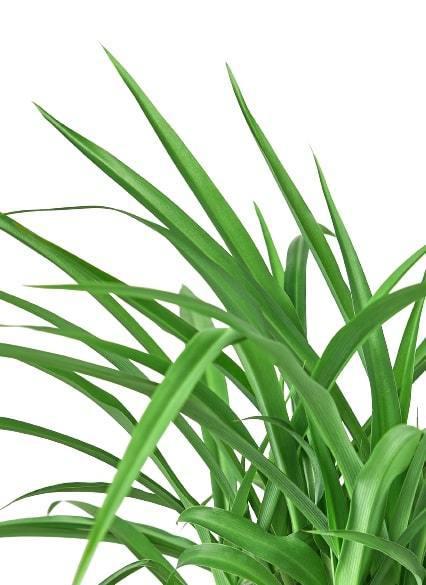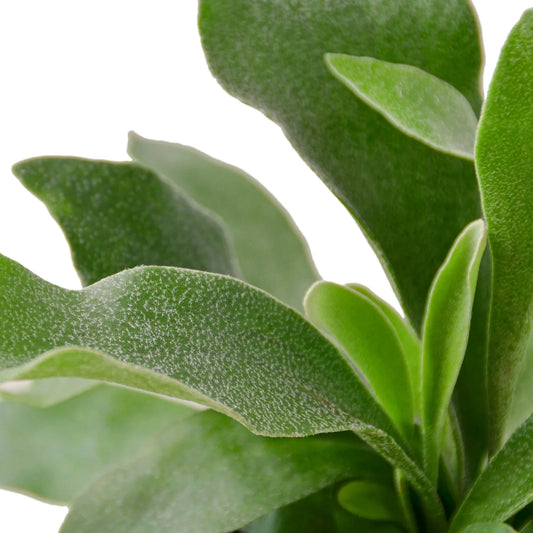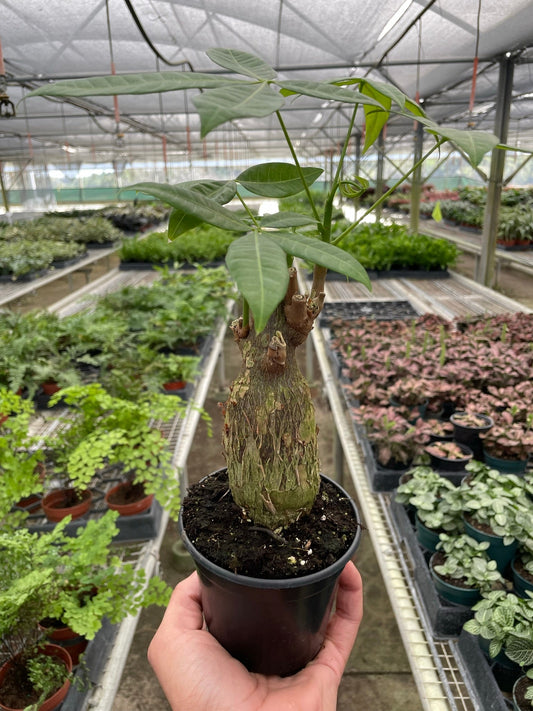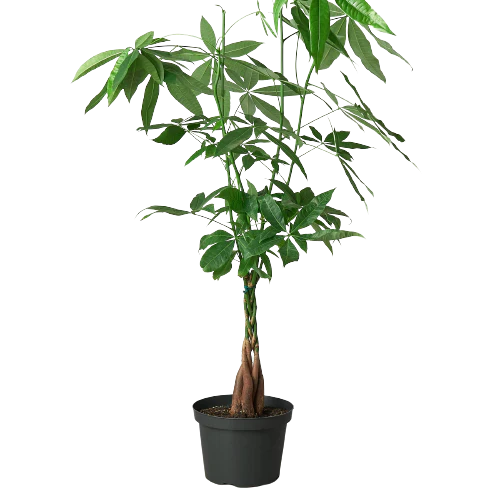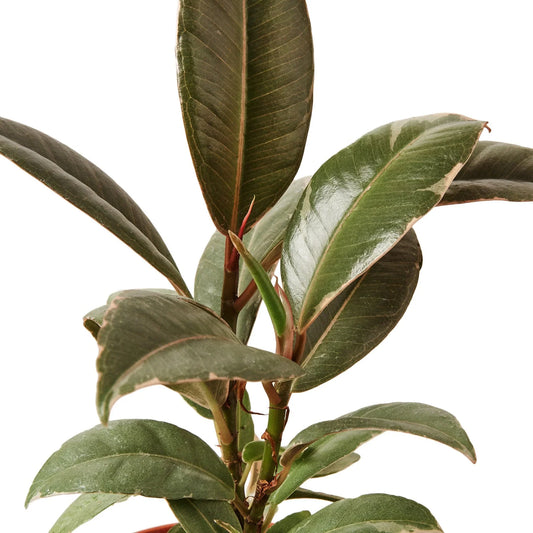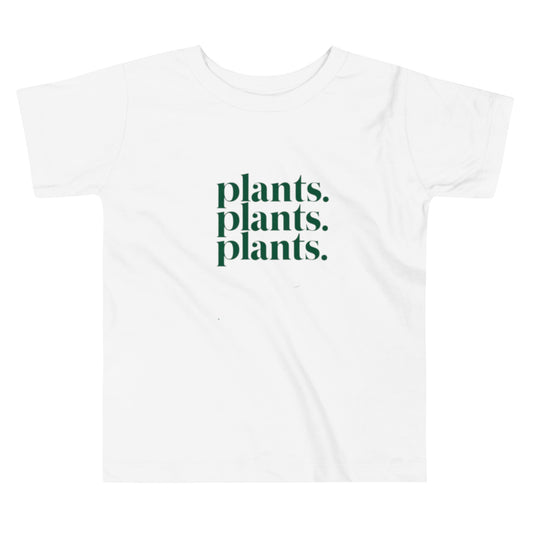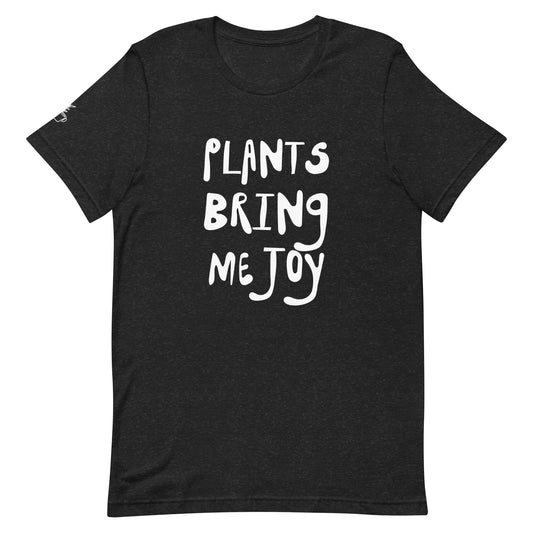Succulents Size: How Big Do They Get?
Cafe Planta Team
Succulents are some of the most beloved plants among green-thumbed folks, and it's no wonder why. With their quirky shapes, vibrant colors, and low-maintenance nature, they're like the cool kids of the plant world. But one question often comes up: How big do these trendy plants actually get?
This article is here to satisfy your curiosity about succulent sizes. We'll cover the factors that affect their growth, the range of sizes you can expect, and how to care for them to keep them thriving. We'll also share tips on integrating them into your living space, whether you have a sprawling garden or a cozy apartment.
Understanding Succulent Growth
Succulents are a diverse group of plants that store water in their leaves, stems, or roots, allowing them to thrive in arid conditions. This adaptation plays a significant role in their growth patterns. Generally, succulents grow slowly compared to other plants, but their ultimate size can vary widely depending on a few key factors.
First, let's talk about species. With over 10,000 types of succulents, there's a broad spectrum when it comes to size. Some, like the tiny lithops, may never grow larger than a pebble, while others, such as the agave, can reach several feet in height and width. It's essential to know what type of succulent you have to set realistic expectations for its growth.
Another crucial factor is the environment. Succulents need bright light to grow well, and a sunny windowsill or outdoor spot is ideal. However, too much direct sunlight can scorch them. A balance between light, temperature, and humidity will influence how your succulents develop. In cooler, more humid climates, growth may slow, while in warm, dry conditions, they might thrive and grow more quickly.
- Species: Different succulents have different growth potentials.
- Light: Essential for healthy growth, but too much can be harmful.
- Temperature and humidity: Affect the speed of growth.
Understanding these elements helps you create an environment where your succulents can reach their full potential, whether they're meant to stay small or grow into impressive, large specimens.
Small Succulents: Tiny But Mighty
Small succulents are perfect for those who have limited space but still want to enjoy these charming plants. These pint-sized varieties can be particularly appealing for apartment dwellers or those wanting to add a touch of greenery to their desks or shelves.
Take lithops, for instance. These fascinating little plants, often called "living stones," typically stay under an inch tall. They blend seamlessly into rocky landscapes, making them a unique and conversation-worthy addition to your collection. Another tiny wonder is the Echeveria 'Lola', with its rosette form that rarely exceeds six inches in diameter. These are ideal for small pots or terrariums.
Small succulents don't just fit anywhere; they're also easy to care for. They require minimal water and can thrive with just a few hours of sunlight each day. If you're worried about overwatering, consider using a well-draining soil mix and a pot with drainage holes. This setup ensures excess water doesn't linger at the roots, which is crucial for their health.
When it comes to integrating small succulents into your home, think creatively:
- Use them as centerpieces on your dining table.
- Create a mini succulent garden in a shallow dish or tray.
- Incorporate them into hanging planters for vertical interest.
With small succulents, you're not just limited to traditional potting. Their compact size allows for innovative displays that can brighten up any corner of your home.
Medium-Sized Succulents: The Perfect Balance
Moving up the scale, medium-sized succulents offer a fantastic balance for those who want something more substantial than the tiny varieties but aren't quite ready to commit to the care larger plants demand. These succulents make a statement without taking over your space.
A good example is the Aloe vera plant, which can grow up to two feet tall and wide. Known not only for its medicinal properties but also for its striking appearance, Aloe vera plants are a staple in many homes. Then there's the popular Jade plant (Crassula ovata), which can reach up to three feet in height. Its thick, glossy leaves and tree-like form make it a favorite among plant lovers.
Medium-sized succulents require a bit more attention than their smaller counterparts but are still relatively low-maintenance. They need regular watering, especially during the growing season, but should be allowed to dry out between waterings to prevent root rot. Bright, indirect sunlight is typically best, although some varieties can handle direct sun for part of the day.
In terms of placement, medium-sized succulents can be used in various ways:
- As focal points in your living room or entryway.
- On shelves or bookcases for a touch of greenery.
- In larger terrariums or glass containers for a modern look.
These plants can transform a space with their presence, adding a touch of nature without overwhelming the room.
Large Succulents: Making a Bold Statement
If you're looking to make a bold statement, large succulents are the way to go. These plants can become the centerpiece of any room or garden, offering both beauty and a bit of drama. While they do require more space and care, the payoff can be significant, with striking forms that capture attention.
The Agave americana, also known as the century plant, is a prime example of a large succulent. It can grow up to six feet tall and ten feet wide, making it a stunning focal point for a garden or large indoor space. Similarly, the Saguaro cactus (Carnegiea gigantea), native to the American Southwest, can reach heights of 40 feet in the wild, although it's much more manageable in a pot.
Taking care of large succulents involves some unique considerations. They need substantial containers to accommodate their size and roots, and these containers should have good drainage. Watering should be less frequent but thorough, allowing the soil to dry out between sessions. These plants also benefit from occasional feeding during the growing season to support their size.
When placing large succulents in your home or garden, think about:
- Using them as outdoor landscaping features.
- Placing them in large pots by doorways or patios.
- Allowing them to stand alone in a room for a minimalist look.
Large succulents can create a sense of drama and elegance, transforming your space into a lush, green oasis.
Factors Affecting Succulent Size
You might be wondering why some succulents grow larger than others, even within the same species. Several factors influence this, and understanding them can help you better manage your plants’ growth.
First up is the pot size. Succulents are often "root-bound," meaning their roots fill the pot, limiting growth. A larger pot gives roots more space to spread, potentially leading to a larger plant. However, be cautious, as too much space can lead to overwatering issues.
Next, consider the soil mix. Succulents thrive in well-draining soil, which prevents water from sitting at the roots and causing rot. A mix of cactus soil, perlite, and sand is often recommended. This setup mimics their natural environment, promoting healthy growth.
Lastly, don't forget about feeding. While succulents are low-nutrient plants, they do benefit from occasional feeding, especially during the growing season (spring and summer). A balanced, water-soluble fertilizer diluted to half strength can encourage growth without overwhelming the plant.
- Pot size: Larger pots can support bigger plants, but be careful of overwatering.
- Soil mix: Well-draining soil is crucial for healthy roots.
- Feeding: Occasional fertilizing supports growth.
By understanding and adjusting these factors, you can help your succulents reach their full potential, whether you want them small and cute or large and impressive.
Succulents in Interior Design
Succulents are not just plants; they're living art pieces that can enhance your home's interior design. Their diverse shapes, sizes, and colors make them versatile options for any style, from minimalist to bohemian.
In a modern setting, consider using succulents with clean lines and geometric shapes, like the Aloe vera or Haworthia. These can complement a sleek, minimal space. On the other hand, if your style leans towards rustic or eclectic, opt for sprawling succulents like the Burro's Tail (Sedum morganianum) or the String of Pearls (Senecio rowleyanus).
Succulents also pair beautifully with a variety of materials. Try placing them in terracotta pots for a classic look, or glass containers for a contemporary feel. Mixing different succulents in one container creates an eye-catching arrangement, offering a blend of textures and colors.
Here are a few creative ways to incorporate succulents into your decor:
- Table centerpieces: Use a mix of small succulents in a shallow dish for a simple yet elegant centerpiece.
- Wall art: Create a succulent wall garden using a frame or shadow box.
- Bathroom greens: Place moisture-loving succulents like air plants on your bathroom shelf for a spa-like ambiance.
With a bit of creativity, succulents can become an integral part of your home's aesthetic, adding both beauty and a touch of nature to your living space.
Common Mistakes and How to Avoid Them
Even though succulents are known for being easy to care for, there's always room for error. Let's look at some common mistakes plant people make and how you can avoid them to keep your succulents thriving.
One of the most frequent mistakes is overwatering. Succulents are drought-tolerant, and too much water can be detrimental. Remember, it's better to underwater than overwater. Ensure your pot has drainage holes, and let the soil dry between waterings.
Another issue is insufficient light. While succulents can survive in lower light conditions, they won't thrive without enough sunlight. If your succulent starts stretching or its leaves become pale, it's a sign of inadequate light. Move it to a brighter location, but avoid sudden changes to prevent shock.
Poor soil is another culprit. Succulents need well-draining soil to prevent root rot. If your plants are in regular potting soil, consider repotting them in a cactus mix or a homemade blend of sand, perlite, and potting soil.
- Overwatering: Let soil dry out between waterings to prevent root rot.
- Insufficient light: Ensure your succulents have access to plenty of sunlight.
- Poor soil: Use a well-draining mix to keep roots healthy.
By avoiding these common pitfalls, you'll be well on your way to a thriving succulent collection that will be the envy of your friends and family.
Growing Succulents Outdoors
If you're lucky enough to have outdoor space, growing succulents outside can be a rewarding experience. They can thrive in gardens, patios, and balconies, bringing texture and color to your outdoor areas.
When planting succulents outdoors, consider your climate. These plants prefer warm, dry conditions, so if you live in a humid or rainy area, you'll need to ensure proper drainage to prevent root rot. Raised beds or containers with drainage holes are great options for such environments.
Succulents can be used to create stunning landscapes. You can plant them in rock gardens, alongside paths, or in mixed borders with other drought-tolerant plants. Their unique forms and colors can add interest and focal points to your garden design.
Here are some tips for outdoor succulent gardening:
- Choose the right location: Opt for a spot with plenty of sunlight, as most succulents need about six hours of sun daily.
- Soil considerations: Ensure the soil drains well. You can amend heavy soil with sand or gravel to improve drainage.
- Water wisely: Water thoroughly but infrequently, allowing the soil to dry out between waterings.
With the right setup, succulents can thrive outdoors, creating a beautiful, low-maintenance garden that you can enjoy year-round.
Choosing the Right Succulent for Your Space
Choosing the right succulent for your space involves more than just picking the one that catches your eye. Consider the size, light requirements, and care needs to ensure a good fit for your home or garden.
For smaller spaces, opt for compact varieties like lithops or Echeveria. These can fit nicely on a windowsill or small shelf without overwhelming the area. If you have more room, consider medium-sized succulents like Aloe vera or Jade plants, which can serve as beautiful focal points.
Light is another critical factor. If you have a sunny spot, succulents like Sedum and Sempervivum will thrive. For lower light areas, consider Haworthia or Gasteria, which can tolerate less intense light.
Maintenance is also important. If you prefer low-effort plants, stick with hardy varieties that don't require frequent watering or attention.
- Space considerations: Choose succulents that fit your available space.
- Light needs: Match succulents to the light conditions in your home.
- Care requirements: Select plants that fit your lifestyle and maintenance preferences.
By considering these factors, you can find the perfect succulents to suit your space, ensuring they thrive and bring joy to your home or garden.
Final Thoughts
Succulents are diverse and adaptable plants that can fit into any lifestyle or space. Whether you love tiny lithops or towering agaves, understanding their growth potential and care needs helps you make the most out of your collection.
At Cafe Planta, we're passionate about helping you find the perfect plants for your home. We offer a wide variety of houseplants, care accessories, and even plant-themed apparel. If you have any questions, feel free to email us or send a message on Instagram. We're excited to share our love of plants with you and help you create a beautiful, thriving plant collection in your home.





